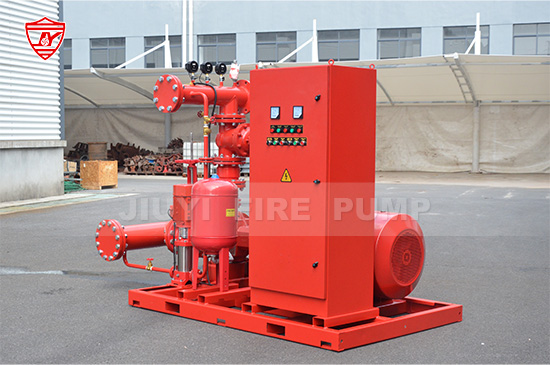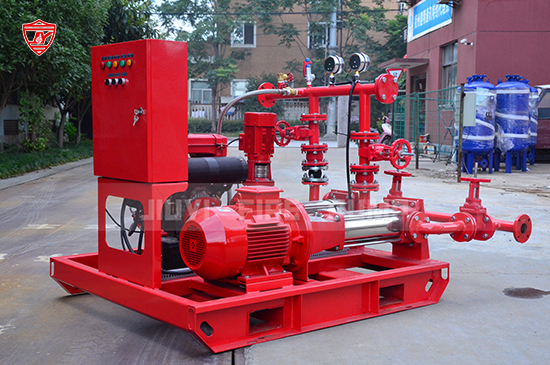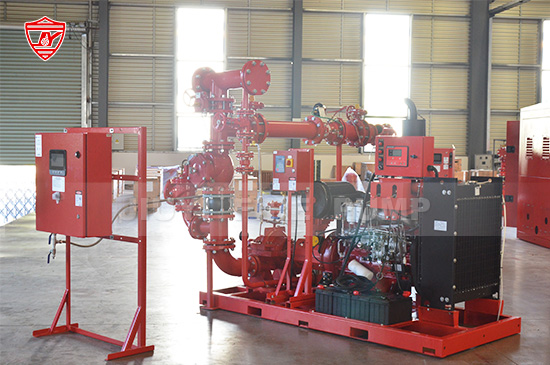Fire pumps play a critical role in safeguarding buildings and infrastructure during emergencies. Ensuring that these systems operate at peak efficiency is not just good practice—it’s a life-saving necessity. One of the most important aspects of fire pump maintenance is understanding when to replace essential parts before wear leads to system failure.
This article explores the expected lifespan of common fire pump components, signs of wear, industry recommendations (especially from NFPA 25), and proactive maintenance practices that extend pump life while ensuring fire safety compliance.
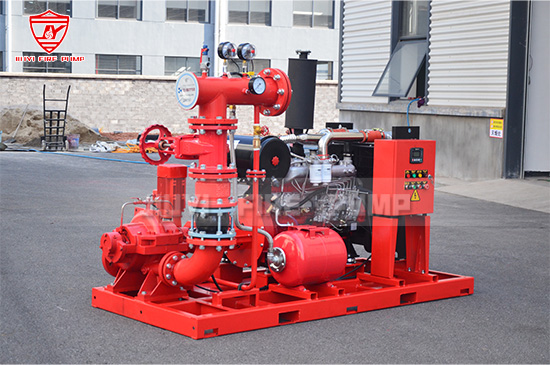
Why Replacing Fire Pump Parts Matters
Fire pumps must deliver instant, high-performance water flow in the event of a fire. If a component fails—be it a gasket, impeller, or bearing—the entire system could malfunction, putting lives and property at risk. Unlike standard industrial pumps, fire pumps typically sit idle for long periods but must work flawlessly when activated.
Proactive part replacement is crucial to:
-
Ensure NFPA 20 and NFPA 25 compliance
-
Avoid emergency failures
-
Extend equipment lifespan
-
Reduce costly downtime and repairs
-
Maintain insurance and inspection readiness
NFPA 25 Guidelines on Fire Pump Maintenance
The National Fire Protection Association (NFPA) sets out strict standards for fire pump inspection, testing, and maintenance in NFPA 25: Standard for the Inspection, Testing, and Maintenance of Water-Based Fire Protection Systems.
While NFPA 25 does not specify exact replacement timelines for each part, it does emphasize regular inspection and performance-based decisions. The frequency of replacement will depend on usage, environmental factors, system age, and test results.
Here’s a general breakdown of what NFPA 25 suggests:
-
Weekly: Visual inspections, pump casing, and packing gland checks.
-
Monthly: Pressure relief valve and circulation relief valve tests.
-
Annually: Flow testing, alignment checks, vibration monitoring, and full system performance analysis.
Based on these assessments, parts should be replaced as needed, especially if degradation is noted.
Common Fire Pump Parts and Their Replacement Frequency
1. Impellers
Function: The heart of the pump, impellers create the pressure required to move water.
Signs of Wear: Erosion, corrosion, imbalance, reduced flow rate.
Replacement Interval: Every 5–10 years depending on use, water quality, and wear signs. Regular ultrasonic thickness testing can help detect erosion.
2. Mechanical Seals and Packing
Function: Prevent water leakage at the pump shaft.
Signs of Wear: Leakage, overheating, unusual vibration.
Replacement Interval: Every 1–3 years for packing; mechanical seals may last 5+ years depending on operating conditions.
3. Bearings
Function: Support the shaft and reduce friction.
Signs of Wear: Noise, vibration, overheating.
Replacement Interval: Typically every 3–5 years, depending on runtime and lubrication.
4. Couplings and Alignment Components
Function: Connect the pump to the driver (electric motor or diesel engine).
Signs of Wear: Misalignment, cracking, excessive vibration.
Replacement Interval: Inspect annually, replace every 5 years or sooner if misalignment is detected.
5. Gaskets and O-Rings
Function: Seal joints to prevent leaks.
Signs of Wear: Cracking, brittleness, leaks.
Replacement Interval: Every 2–5 years; replace during major overhauls or when leaks appear.
6. Pressure Relief Valves
Function: Prevent overpressurization of the system.
Signs of Wear: Sticking, failure to reseat, corrosion.
Replacement Interval: Test annually; replace every 5–7 years or sooner if malfunctioning.
7. Check Valves
Function: Ensure water flows in only one direction.
Signs of Wear: Backflow, sticking, water hammer.
Replacement Interval: Inspect annually, replace every 5–7 years depending on condition and water quality.
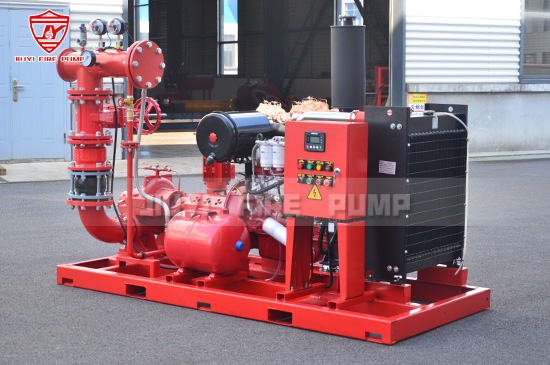 Factors That Influence Replacement Timing
Factors That Influence Replacement Timing
-
Water Quality: Poor water quality (with sand, silt, or corrosive agents) will wear components faster.
-
Pump Usage: Pumps that run frequently for testing or emergency events may experience accelerated wear.
-
Ambient Environment: Corrosive environments (e.g., marine or chemical facilities) reduce part longevity.
-
Pump Type: Diesel fire pumps, electric fire pumps, and vertical turbine pumps may have different maintenance needs.
-
Maintenance History: Lack of lubrication, poor alignment, and skipped inspections often lead to early failure.
Maintenance vs. Replacement: A Balanced Approach
Not all issues require immediate replacement. In many cases, performance can be restored through maintenance such as cleaning, realignment, or lubrication. However, knowing when maintenance is no longer enough is key.
Warning Signs That Indicate Part Replacement Is Necessary:
-
Decreased pump pressure or flow
-
Excessive vibration or noise
-
Visible corrosion or pitting
-
Unusual test results
-
Water leaks at seals or gaskets
Proactive Replacement Planning (With Cost Efficiency)
Rather than waiting for breakdowns, set up a preventive maintenance plan that includes scheduled replacements based on manufacturer recommendations and NFPA guidelines. Keep a maintenance log with:
-
Dates of inspections
-
Test results
-
Observed wear levels
-
Replacement history
Also, consider keeping critical spare parts on hand, especially impellers, seals, and gaskets. This minimizes downtime during emergency repairs.
Professional Inspection and Replacement Services
While some inspections can be done in-house, parts replacement—especially for mission-critical systems like fire pumps—should often be handled by trained professionals. Certified technicians can conduct:
-
Detailed vibration and thermal analysis
-
Pump performance tests
-
Alignment and coupling inspections
-
Factory-authorized overhauls and part replacements
Choosing certified professionals ensures compliance with NFPA, UL/FM requirements, and insurance mandates.

Conclusion: Stay Safe with Timely Fire Pump Part Replacement
A well-maintained fire pump is your last line of defense in a fire emergency. Replacing parts at the right time—before failure occurs—keeps your system compliant, operational, and ready for action when it matters most. By understanding typical wear intervals, recognizing warning signs, and adhering to NFPA 25 standards, you can reduce the risk of system failure and ensure uninterrupted fire protection.

